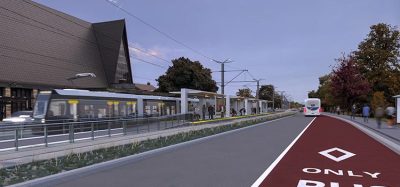Network Rail unveils strategy for East Midlands
Posted: 26 February 2010 | | No comments yet
A plan to unlock capacity and reduce journey times on the main line from London to Sheffield has been unveiled by Network Rail.
A plan to unlock capacity and reduce journey times on the main line from London to Sheffield has been unveiled by Network Rail.
A plan to unlock capacity and reduce journey times on the main line from London to Sheffield was unveiled today as Network Rail published the East Midlands Route Utilisation Strategy (RUS).


Train through station
The strategy sets out a range of proposals to improve rail services between London St Pancras International and Leicester, Nottingham, Derby and Sheffield, as well services between Norwich and Liverpool, and Stansted Airport and Birmingham.
Measures to provide more seats on longer trains, and improvements to reduce journey times are all included in the strategy. Major capacity and reliability enhancement schemes at Leicester, Nottingham and Derby are also set out, along with schemes to provide better links for freight.
Some schemes to improve rail services throughout the RUS area are already underway, such as the congestion busting £5.5bn Thameslink upgrade and improvements to reduce journey times for long-distance trains.
The RUS also supports the case for electrifying the Midland Main Line to Sheffield. In October last year, Network Rail published an extremely attractive business case for electrifying the Midland Main Line which could, over the course of 60 years, pay for itself with the savings made from cheaper running costs and maintenance outweighing the initial investment to electrify the route.
Despite the recent recession, passenger numbers have been relatively resilient. The RUS predicts that demand for rail over the next 10 years will increase by 28% on the main line to London, while passenger journeys are predicted to increase by 40% on routes between the East Midlands and Birmingham. Freight is also expected to increase particularly on routes used by intermodal services.
Dyan Crowther, route director for Network Rail said: “Demand for rail has risen significantly over recent years, and this strategy provides us with a comprehensive plan to accommodate more passengers and increase the use of rail for freight while providing a better, more reliable service.
“Unblocking bottlenecks at the key rail hubs of Leicester, Nottingham and Derby is our immediate priority, but electrifying the Midland main line will deliver greater capacity and faster journey times in the longer term.”
Today’s publication follows a three month consultation with stakeholders including passenger and freight operators, passenger groups, Office of Rail Regulation, Department for Transport, Association of Train Operating Companies, local authorities and regional development agencies.
Options recommended in the RUS to increase capacity and create better rail journeys throughout the region include:
Schemes to provide more seats:
- Commuter services into London St Pancras International and Blackfriars: introduction of 12-car trains as part of the Thameslink Programme to provide a high frequency timetable
- Long distance services: trains in the peak should be lengthened up to a maximum of 11 carriages as soon as rolling stock becomes available
- Leicester and Nottingham: further train lengthening on long distance and some local services to provide extra capacity
Journeys to receive more frequent services to improve regional connectivity:
- Kettering to Leicester, Derby and Sheffield
- Peterborough to Lincoln
- Between Nottingham and Lincoln if the Newark fly-over is built
- Nottingham to Norwich
- Direct service between Nottingham and Stoke-on-Trent
- Birmingham to Cambridge/ Stansted Airport
Schemes to improve freight services:
- Loop south of Bedford
- Loop between Leicester and Kettering near Market Harborough
- Enhanced infrastructure in the Burton-on-Trent area








